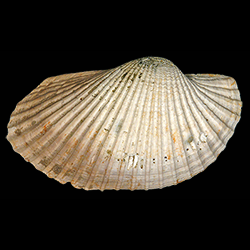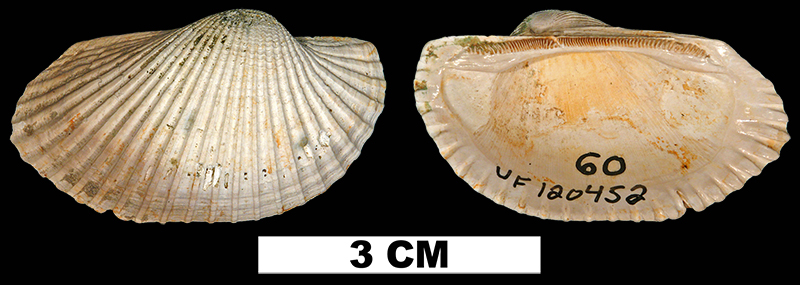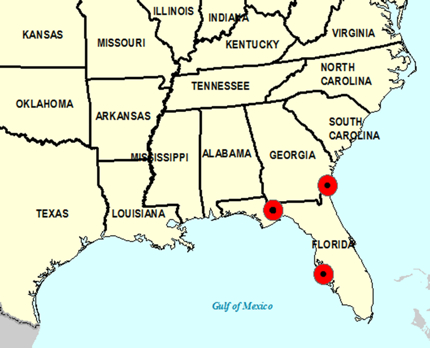
Anadara propearesta

Geological Range
Late Pliocene; Extinct.
Paleogeographic Distribution
Southern Florida to Georgia.
Remarks
Original Description (from Mansfield, 1932, p. 52):
"Shell rather small, semiovate, elongate, low, and inequilateral. Beaks low, weakly impressed mesially at tip and nearly flat behind, and located at anterior third of length. Ribs, 28 in number, rather narrow, flat-topped, nearly equal in size and nearly uniformly separated by round-bottomed interspaces. The ribs over the posterior shoulder and anterior slope are a little wider than those over the middle of shell. Concentric sculpture composed of fine continuous growth lines, giving the early part of the shell a faintly reticulate appearance. Distally the concentric sculpture is less well defined and consists of a few narrow elevations located mainly on the anterior slope. Cardinal area well defined, lanceolate, narrow, wider in front of inturned beak, grooved only on posterior area; hinge line nearly straight, weakly arched upward medially; teeth thin, blunt, arranged in two series - an anterior series with 33 teeth and a posterior series with 45 teeth.
Holotype, a left valve (Cat. No, 371124, U.S.N.M.) measures in height, 19.5 mm.; length, 35 mm.; diameter, 9 mm. Paratype, a right valve from station 3422, measures in height, 14 mm.; length, 23 mm.; diamter, 5 mm.
The new species has fewer ribs than A. lienosa Say and also lacks the incised and beaded ribs that are characteristic of Say's species.
Occurrence: Upper middle Miocene: Arca zone - station 12046, Vaughan Creek, upper locality, Walton County (three small valves and identification uncertain). Upper Miocene: Cancellaria zone - station 11732, borrow pit near Jackson Bluff, Leon County, type locality (seven valves); station 3422, upper bed at Jackson Bluff (one right valve)."
To access this description in its original formatting through the State University Libraries of Florida, click here.
Stratigraphic Occurrences
- Late Pliocene
- Duplin / Raysor formations (GA)
- Jackson Bluff Formation (N. FL)
- Tamiami Formation (Pinecrest Beds) (S. FL)


